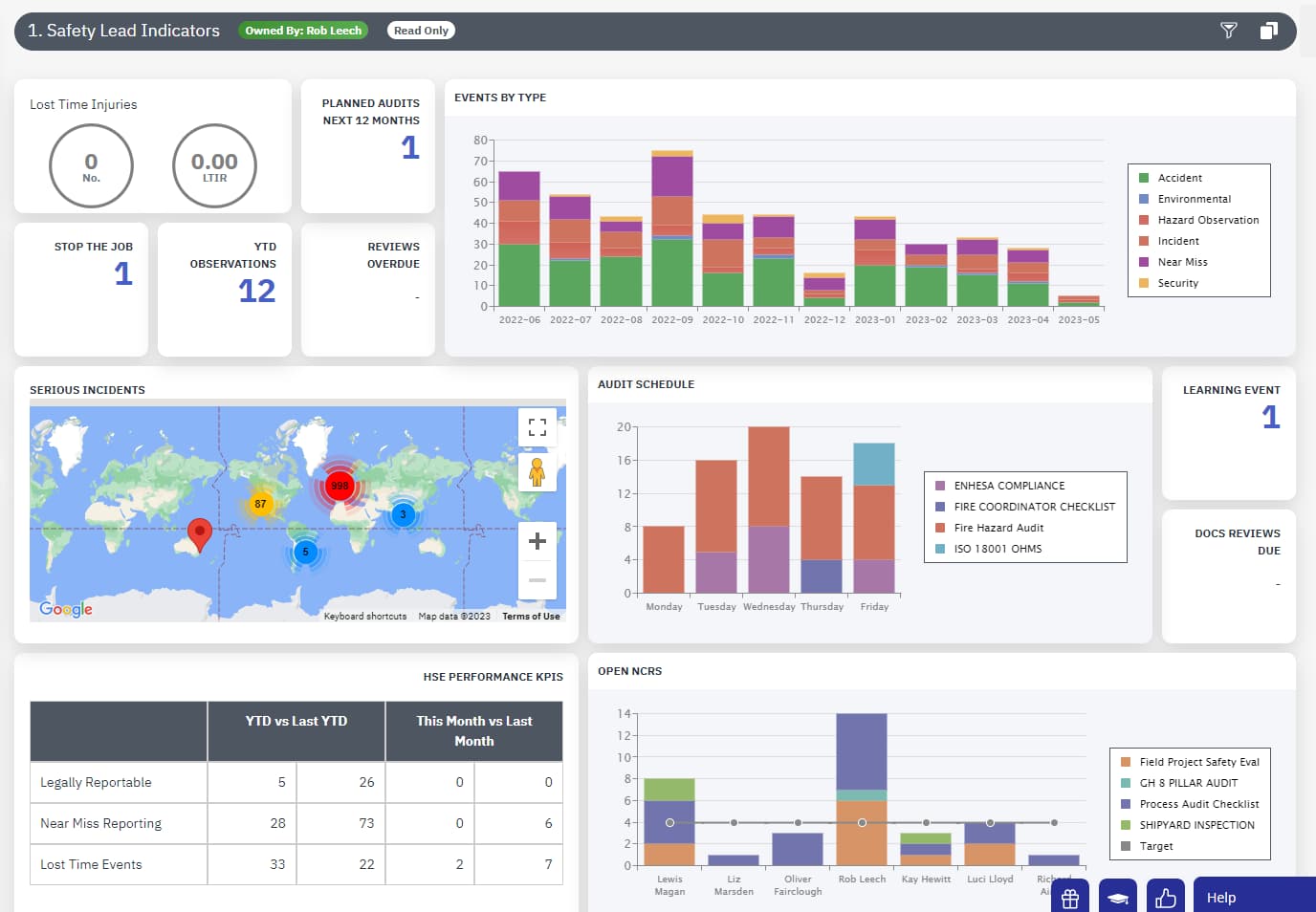
Risk-Based Inspection (RBI) Meaning & Definition
What is Risk-Based Inspection (RBI)?
Risk-based inspection is defined as a business process that’s primarily used to examine equipment, ranging from pressure vessels to the pipes used in industrial plants. It is a methodology that’s commonly used for creating an optimal inspection plan.
The concept of risk-based inspection focuses on using custom industry practices, often derived from prescriptive codes and health and safety guidelines.
From determining the frequency of inspection to the methods used and even the locations to examine, risk-based inspection focuses on developing a scheme for conducting inspections based on the examiner’s knowledge of failure.
Is incident reporting the key to culture change?
Get this 17-page guide discussing how reporting incidents, close calls and observations can help transform your safety culture.
The Importance of Risk-Based Inspections
Risk-based inspections are generally quite important as they offer an alternative approach to conducting inspections. Companies use this approach instead of time-based inspections as they provide a more accurate understanding of risk, its drivers, and the equipment’s remaining useful life.
RBI can give a better understanding of whether an inspection is necessary, but it also provides additional information about whether the machinery is at a risk of breakdown, and can be used to predict when the machine might stop working.
For instance, if the probability of failure, or PoF is higher, then the company can take appropriate steps to mitigate the risk. This includes looking at options to replace or repair the machinery, or taking other steps to ensure continuity.
Risk-based inspections can be used to prioritize specific activities related to inspections, mainly using nondestructive testing methods. This is designed to help reduce uncertainty surrounding the state of damage of the equipment.
Once the risk-based inspection is completed, it can provide a more accurate understanding of the asset’s condition, including determining further steps, like changing the construction material or installing liners that are resistant to corrosion, or even adding a fresh coat of paint.
Risk-based inspections are generally conducted by trained professionals and help businesses gain a better understanding of the state of their plant and equipment. If the machinery is in dire straits, and the consequence of failure (CoF) is high, then the company needs to act swiftly and make arrangements.
How do Risk-Based Inspections Work?
A risk-based inspection approach factors in past experiences, probabilities, and any predictions of failure before the inspection begins. This is what sets it apart from conventional time-based inspections.
Risk-based inspections are different because of two major factors. Firstly, there’s the probability of failure (POF) assessment, where the company assesses the probability of failure to the plant based on degradation or deterioration.
The second is an assessment of the consequence of failure. This is generally expressed in monetary terms, indicating how much the company or organization stands to lose if the particular plant or machinery stops working.
Thus, risk is defined by multiplying the probability of failure with the consequence of failure. The first step to conducting a risk-based inspection is to gather information and data.
Companies often use three different approaches for conducting a risk-based inspection:
- Qualitative: This is based on the judgement and the experience of inspectors.
- Quantitative: This is data gathered based on probability or statistics.
- Semi-quantitative: This includes a mixture of both.
Once companies gather adequate data, the next step is to conduct the risk analysis. They factor in the consequence of failure (CoF) and the probability of failure (PoF), and then create a list of priority.
This helps companies evaluate which machinery poses the highest fiscal risks or which poses the highest risks to employee safety. Companies can then manage their inspection or maintenance plans.
The primary objective is to reduce the chances of critical failure and to reduce overall risk by creating a maintenance schedule that’s designed to optimize the performance of high-risk equipment.
Benefits of Risk-Based Inspections
Risk-based inspections offer several benefits, such as:
- RBI improves risk management significantly by focusing on reassessing risk and taking steps to mitigate it.
- It also helps minimize downtime by reducing any critical malfunctions that could affect the business’ performance.
- RBI helps companies save money on inspections, as they can space out inspections for low-risk assets and ultimately reduce any untimely breakdowns.
- RBI also helps optimize workforce resources by reducing the chances of conducting needless inspections.
Where are Risk-Based Inspections Used?
Originally, the risk-based inspection methodology was created by the American Petroleum Institute (API). The original document was published in 2000, providing readers with the basic guidelines required to conduct an inspection.
Today, risk-based inspections are used in a variety of different industries, including energy, oil and gas, petroleum, engineering industries such as power generation or pharmaceutical industries, and others.
It relates directly to Risk Based Asset Management, and helps companies extract optimal performance from their maintenance schedules.
Use EcoOnline’s Health & Safety Software to Manage Information about Risk-Based Inspections
EcoOnline’s Health & Safety Software is a cloud-based solution that’s designed to help organizations conduct a thorough analysis of their available assets. It’s a modular solution that makes it easy for companies to maintain an asset register and manage information in a streamlined manner.




